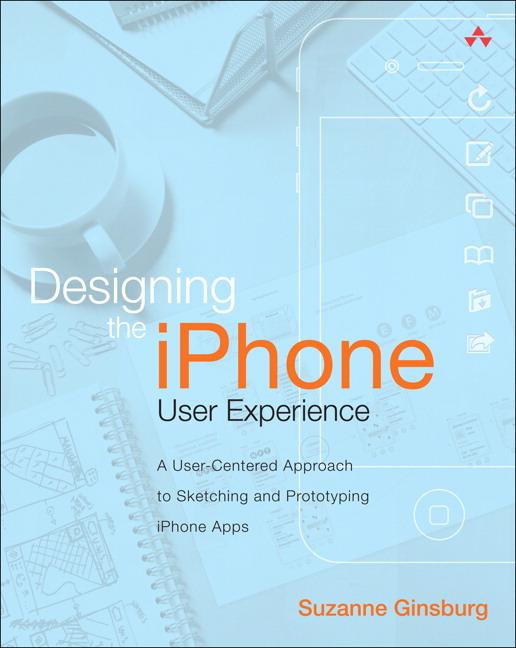Suzanne Ginsburg will be teaching the new course Info 290. Designing Mobile Experiences at the School of Information in Fall 2012; she is the author of the book Designing the iPhone User Experience: A User-Centered Approach to Sketching and Prototyping iPhone Apps, published by Addison-Wesley, and a user-experience consultant, helping companies conceptualize and design software.
Ginsburg is also an alumna of the School of Information (MIMS ’99), where she studied user interface design.
We spoke with her this week about her upcoming course, her approach to mobile design, and her return to the School of Information.
Mobile Experience Design’s Biggest Challenge
“The biggest challenge today when designing for mobile devices is the speed with which design standards are changing,” said Ginsburg.
Each new revision of the Android or iOS operating systems may include new features or new ways of interacting, and design guidelines (like the Apple iOS Human Interface Guidelines) are constantly evolving.
Not only is each operating system evolving quickly, but the overall marketplace is also shifting over time. “Three years ago, most of my corporate clients were focused on developing for the iPhone,” said Ginsburg. “Today, everyone wants apps for both Apple’s iOS and for Android.” With the recent announcement of Microsoft’s new Surface tablet, it’s now possible that a third platform may make significant headway into the mobile market.
Maintaining an existing app requires staying on top of all of the technical changes, as well as all of the changes in the mobile marketplace. But a designer’s first job, says Ginsburg, is to be a designer. “If you have solid design skills, those skills will be transferable to all the different platforms.”
Why Start-Ups Have an Advantage
Cross-platform design doesn’t just mean designing for two operating systems; it also includes different devices (tablets vs. phones) and older versions of the OS. “More and more, companies are striving for a consistent user experience across multiple platforms — native mobile apps for multiple devices and operating systems, mobile web apps, mobile websites, and even their traditional websites,” explained Ginsburg.
“Cross-platform consistency can be especially hard for companies with a lot of legacy software. It can be easier for start-ups, since they can start with a single holistic vision.”
When Facebook released its first mobile app, its user experience was vastly different from the traditional browser interface. For Facebook, moving toward greater cross-platform consistency has meant modifying the traditional Facebook website as well as the mobile apps.
Twitter recently implemented a major design change on all of its platforms — web, mobile, and apps — to make the user experience more consistent.
The challenge for designers is balancing the desire for the best native experience — taking advantage of the functions built into each device — with cross-platform consistency. “When does that mean a single unified design, and when does it mean multiple designs for different platforms?” asks Ginsburg. “The answer isn’t always obvious.”
The Upcoming “Designing Mobile Experiences” Course
Ginsburg looks forward to exploring these challenges with the students in this fall’s Designing Mobile Experiences course. The course will be project-based, with a focus on techniques for design and prototyping .
“I’m really looking forward to working with a diverse group of students,” said Ginsburg, “and seeing what ideas and experiences they bring to the course.” By the end of the course, each student should have at least a working prototype, if not a fully functional mobile app. “I'm particularly excited to see which student projects end up becoming real products,” added Ginsburg.
The School of Information, Then and Now
Ginsburg is also looking forward to returning to the School of Information as an instructor, thirteen years after finishing her master’s degree here — the first graduating class from the newly-created school, then named the School of Information Management and Systems.
“The I School laid an important foundation for me as a designer,” said Ginsburg. “A lot of my practice has evolved over the past decade, but my basic approach has stayed the same. The School’s program has really stood the test of time.”












